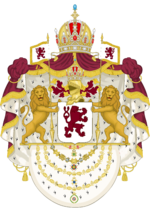List of political parties in Werania: Difference between revisions
Jump to navigation
Jump to search
Britbong64 (talk | contribs) |
Britbong64 (talk | contribs) |
||
| Line 239: | Line 239: | ||
|- | |- | ||
| colspan="7" | Founded by the supporters of Ulrich von Bayrhoffers, the liberals supported anti-clericalism and Weranian nationalism. After the [[Easter Revolution]] the liberals moved to the right supporting rapprochment with the Church. In 1892 their left wing broke off leading to the liberals to form a coalition with the church. The liberal party would become a core component of centrist and right-wing coalitions in the early 20th century. The liberals often represented right-wing liberalism, although due to the rise of socialism and the decline of the radical party steadily moved to the far-right throughout its existence often embracing authoritarian tendencies. In 1951 they merged into the LDPO. | | colspan="7" | Founded by the supporters of Ulrich von Bayrhoffers, the liberals supported anti-clericalism and Weranian nationalism. After the [[Easter Revolution]] the liberals moved to the right supporting rapprochment with the Church. In 1892 their left wing broke off leading to the liberals to form a coalition with the church. The liberal party would become a core component of centrist and right-wing coalitions in the early 20th century. The liberals often represented right-wing liberalism, although due to the rise of socialism and the decline of the radical party steadily moved to the far-right throughout its existence often embracing authoritarian tendencies. In 1951 they merged into the LDPO. | ||
|- | |- | ||
| rowspan="2" style="background: #a672a6;" | | | rowspan="2" style="background: #a672a6;" | | ||
Latest revision as of 02:00, 26 February 2024
This article lists political parties in Werania.
Parties with federal representation
| Party logo | Party name | Leader | House of Deputies seats | House of Councillors seats | Seats in state governments |
Euclean Parliament seats |
Ideology | |
|---|---|---|---|---|---|---|---|---|

|
National Consolidation Party Nationale Konsolidierungspartei |
 Anton Raicevich |
300 / 545
|
130 / 232
|
314 / 1,067
|
47 / 121
|
||
| The NKP was founded in 1957 as a merger of the Conservative Party, National Liberal Party and the Catholic Social Party in order to create a big-tent party of the right. The NKP held government several times in the 20th century promoting centre-right and Sotirian democratic policies. It was in opposition from 1984 to 1999 before coming back to power under Rasa Šimonytė, the first Ruttish and female Chancellor who oversaw the Weranian response to the Great Recession. The party came back to power in 2019 under Otto von Hößlin who has supported a more national conservative and euclesceptic position. | ||||||||

|
Euclean Werania Eucläische Ostischland |
 Luise Höcherl |
101 / 545
|
62 / 232
|
293 / 1,067
|
20 / 121
|
||
| A merger of the Social Democratic Radical Party of Werania and the Modern Centre Party in 2021 EO aimed to bring together pro-Euclean and liberal tendencies to both unite the opposition to the NKP and check the growing power of the Greens. It is currently the main opposition party. | ||||||||

|
Greens - Ecological Action Grünen - Ökologische Aktion |
  Yvonne Buchholz & Josef Kirui |
45 / 545
|
9 / 232
|
174 / 1,067
|
22 / 121
|
||
| Founded in 1977, the Greens has been represented in the Weranian Bundestag since 1987 following increased awareness of environmental issues. The Greens have risen in terms of support since the 2005 recession due to their progressive politics. They served in the federal goverment from 1995 to 1999. The Green party became the third largest political force in the 2019 elections attaining roughly the same support as the SRPO. | ||||||||

|
National Coalition for Independence Nacionalinė Nepriklausomybės Koalicija |
 Arvydas Ražauskas |
40 / 545
|
10 / 232
|
70 / 1,067
|
4 / 121
|
||
| A party that exclusively runs in Ruttland, the NNK was formed in 1999 by businessmen Arvydas Ražauskas. Its main position is the establishment of an independent Ruttish republic and is considered the main separatist party in the free state. On other policies it is considered populist supporting a broadly progressive economic policy coupled with conservative social policies and strong environmentalist positions. It formed the Ruttish regional government from 2008-2012 and since 2019 is the biggest party in Ruttland. | ||||||||

|
Weranic Section of the Workers' International Ostisch Sektion der Arbeiter Internationale |
 Peter Lötzsch |
40 / 545
|
6 / 232
|
62 / 1,067
|
8 / 121
|
||
| The oldest party in Werania, the OSAI during the first half of the 20th century was one of the major socialist parties in Euclea being supportive of orthodox socialism, albeit representing a more reformist path then Swetanian and Marolev socialists. It declined following the emergence of the SRPO and the Green parties with changes in the structures of the economy seeing a general decline in union based labour the OSAI relied on for its support base. It is still close to the General Federation of Weranic Workers' (ABOA), the second largest federation of trade unions in Werania. | ||||||||

|
Democratic Alternative Demokratische Alternative |
 Käthe Schickdanze |
9 / 545
|
2 / 232
|
46 / 1,067
|
8 / 121
|
||
| The Democratic Alternative was formed in 1985 by right-wing members of the National Consolidation Party dissatisfied with the party leadership. The DA contains a mixture of national conservatives, national liberals, libertarians and populists but is broadly united by a strong souverainiste policy towards the Euclean Community, supporting an exit from the organisation. The DA since 2019 serves in the federal government as the junior partner to the NKP. | ||||||||

|
Socialist Workers' Party of Werania Sozialistische Arbeiterpartei Ostischland |
 Stefan Kiesinger |
5 / 545
|
4 / 232
|
28 / 1,067
|
7 / 121
|
||
| SAPO was formed in 2021 by left wing members of the SRPO who opposed that partys merger into Euclean Werania. It is a left-wing party that supports democratic socialism and environmentalism. | ||||||||

|
Sotirian Democratic Homeland Sotričionių Demokratų Tėvynė |
 Natalija Saldaitiene |
2 / 545
|
4 / 232
|
16 / 1,067
|
1 / 121
|
||
| Formed in 1937 in order to counter left-wing parties in Ruttland, the SDT runs solely in Ruttland. Founded with close connections to the Ruttish clergy throughout the latter half of the 20th century it established itself as the largest party in Ruttland alongside the Social Democratic Party-Labour Union (the SRPO's branch in Ruttland) and the NKP. It also served in federal governments from 1999-2011 and 2015-2019 and provided parliamentary support for governments from 1963-1972. Although formed as an ultraconservative party the SDT has since been seen as a pragmatic force serving in coalition with conservatives, liberals and socialists. | ||||||||

|
Aldman People's Party Aldske Folkspartij |
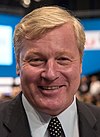 Haiko Posthuma |
1 / 545
|
0 / 232
|
10 / 1,067
|
1 / 121
|
| |
| Being representative of the Aldman community, the AFP mainly is concentrated on the Estmerish border in Cislania. A centrist party that is broadly liberal and pro-Euclean, the AFP often serves as a coalition partner for the Cislanian government due to its ideology flexibility. | ||||||||
| United Party Vereinigte Partei Vaega Faaupufai Aufaatasi |
 Matthias Iha |
1 / 545
|
0 / 232
|
13 / 1,067
|
0 / 121
|
|||
| Formed in 1950 the United Party is the largest party in Charlotte Island. It mainly promotes unionism with Werania and Charlotte Island, with most of its other policies being centre-right in nature. It supports the National Consolidation Party on a national level sitting in their parliamentary group. | ||||||||
Minor parties
| Party logo | Party name | Leader | Seats in state governments |
Ideology | |||
|---|---|---|---|---|---|---|---|

|
Democratic Party Vaega Faaupufai Temokalasi Demokratische Partei |
 Iareto Ala'ilima |
7 / 1,067
|
||||
| The VFT-DP was founded in 1992 when Iareto Ala'ilima split from the TFS after opposing the latters land reform policies. The VFT-DP is supported by the traditional tribal chiefs on the island and supports conservative policies that is more accommodating of the rural Tutuan population in contrast to the Lapaha based United Party and Reform Alliance. | |||||||

|
Reform Alliance Toe Fuata'iga So'otaga Reformbündnis |
 Opetaia Lotomau |
3 / 1,067
|
||||
| The Reform Alliance was founded in the 1980's as a merger of ethnic minority groups opposed to the minority rule of the United Party. Primarily supported by labourers in Lapaha the Reform Alliance is supported by a mixture of Tutuan and Coian people. They are supportive of Charlotte Islander independence and socialist economics. | |||||||
| Women of Werania Frauen aus Ostischland |
 Patrizia Auffarth |
0 / 1,067
|
|||||
| Future Party Zukünftige |
 Gunnar Breytenbach |
0 / 1,067
|
|||||

|
Fur not feathers Party Pelz statt Federn Partei |
 Adalbert II |
0 / 1,067
|
||||
Defunct parties
| Party logo | Party name | First leader | Last leader | Establishment | Dissolution | Ideology | |
|---|---|---|---|---|---|---|---|

|
Liberal Party Liberale Partei |
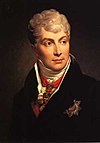 Ulrich von Bayrhoffer |
 Gottfried von Litzmann |
1842 | 1951 | ||
| Founded by the supporters of Ulrich von Bayrhoffers, the liberals supported anti-clericalism and Weranian nationalism. After the Easter Revolution the liberals moved to the right supporting rapprochment with the Church. In 1892 their left wing broke off leading to the liberals to form a coalition with the church. The liberal party would become a core component of centrist and right-wing coalitions in the early 20th century. The liberals often represented right-wing liberalism, although due to the rise of socialism and the decline of the radical party steadily moved to the far-right throughout its existence often embracing authoritarian tendencies. In 1951 they merged into the LDPO. | |||||||

|
Radical Party Radikale Partei |
 Klemens Müller |
 Joschka Schreiber |
1842 | 1986 | ||
| Initially the radicals were those who supported the reestablishment of a Weranian republic and were mainly made up of members of the Septemberists. The failed Easter Revolution led to a collapse of the republican movement in 1856, leading to the republican bloc in the Bundestag to be marginalised. The radical party was founded as the first organised political party in Werania representing radicals, liberals and republicans. The party led progressive governments from 1903-8 and 1911-13 but lost its pre-eminent position on the left after the rise of the socialist OSAI party due to the Great Collapse. The RP was a member of the popular front government of 1915-1918 but soon began to participate in various centre-left, centrist and right-wing governments. The foundation of the PMZ in the 1970's led to the radicals to decline in support and merge with the social democrats to form the SRPO in 1977. | |||||||

|
Catholic Social Party Katholische Soziale Partei |
 Georg von Kupferblum |
 Walther Ritter von Dittmann |
1860 | 1951 | ||
| The Catholic Bloc represented the first organised force for political Catholicism in Werania being founded in reaction to the Prince of Oppolzer's attempts to bring Catholics into the political area, a trend largely supported by the Adalbertine movement. The Catholic Bloc led by priest Georg von Kupferblum who led ultramontane opposition to the Prince of Oppolzer. They would soon absorb the Legitimists and emerge as the main right-wing party in Werania, being the dominant political force in the first half of the 20th century participating in every cabinet from 1914 to 1950 aside a nine-moth interregnum from 1918 to 1919. The KSP maintained a national conservative right faction, a centrist faction and a left faction throughout its existence but after the Great War the right faction became ascendant leading the Fatherland Bloc. The KSP led Werania into the Valduvian-Weranian War and became associated with the Weranian defeat. Their left wing split off to form the Sotirian Democratic Party and they were heavily defeated in the 1950 election. The KSP merged into the LDPO. | |||||||
| Weranian Socialist Party Ostischersozialistische Partei |
 Ludwig Vollmar |
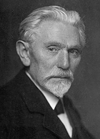 Albrecht Küchenthal |
1872 | 1901 | |||
| The first Weranian socialist party, the OSP was created by the esteemed scholar Ludwig Vollmar. The OSP contained a variety of political opinions but tended to be more revolutionary then other socialist parties, supporting both scientific socialism and syndicalism. It was commonly accused of impossibilism by its opponents. The OSP joined with the Weranian Socialist Workers' Party in 1901 to form the Weranic Section of the Workers' International. | |||||||
| Young Ruttland Party Jaunoji Ruttųijos Partija |
 Kasimieras Kiaupienė |
 Arvydas Żyliński |
1876 | 1930 | |||
| The JRP was formed in 1876 following the failure of Chancellor Franz Gustav von Reichenstein to extend home rule to Ruttland. Comprised primarily of Ruttish intellectuals the JRP was part of a general movement that revived the Ruttish language and cultural aspects, being firmly rooted in liberal assumptions. The JRP pushed for home rule albeit factions within it favoured outright independence. The JRP was dissolved in 1930 during the Great War after the Weranic government feared it would side with the Gaullican-backed Liplisqués Government. | |||||||
| Weranian Socialist Workers' Party Ostischersozialistische Arbeiterpartei |
 Joachim Heisenberg |
1890 | 1901 | ||||
| The OSAP was formed in 1890 by Joachim Heisenberg in opposition to the OSP's "impossibilism" with Heisenberg promoting a more gradualist course for socialist politics and cooperation with bourgeois parties. The OSAP merged with the OSP in 1901 into the Weranic Section of the Workers' International. | |||||||

|
Centre Party Landbund/Zentrumspartei |
 Konrad Graf von Köfering zu Henßler |
 Sotirian Böhm |
1897 | 1990 | ||
| The Landbund was formed following a liberalisation of agricultural tariffs in 1897. The Landbund mainly came from small tenent holders, becoming the main representatives for rural Werania. The party was ideologically flexible having both agrarian socialists and völkisch politicians. The party would move to the right following the Great war but after the Valduvian-Weranian War they moved to the centre. It was named the Centre Party from 1942 onwards and in the 1980's would be part of the Social Democratic Radical Bloc. They did not federate into the unified SRPO instead reforming as the Modern Centre Party. | |||||||
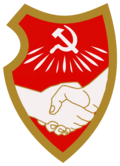
|
Social Democratic Party of Werania Sozialdemokratische Partei Ostischland |
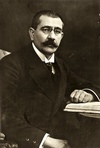 August Olbrich |
 Frank Schellscheidt |
1919 | 1986 | ||
| The SPO were founded in 1919 as the pro-war wing of the OSAI party that supported conflict with Kirenia which the OSAI government had opposed. Although founded "supporting the revolutionary proletariat" the SPO soon moved to the right adopting a revisionist and reformist line. During the 1950's it formed the grand coalition between the OSAI and KSP before largely aligning with the OSAI and RP against the NKP. In 1977 it decided to merge with the RP to form the SRPO. | |||||||
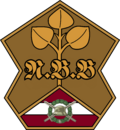
|
National Völkisch Movement Nationale Völkische Bewegung |
 August Vorbeck |
1920 | 1933 | |||
| The NVB was a quasi-functionalist party based around its leader August Vorbeck the NVB came third in the 1922 elections but declined thereafter as they became closer to Gaullica. During the Great War the NVB allied with Gaullica with 1927. The creation of the Liplisqués Government and continued demands for a "greater Werania" led to tensions between Vorbeck and Gaullica. In 1933 the NVB was dissolved by Gaullica with its cadres executed. | |||||||

|
Weranic Syndicalist Union Ostischer Syndikalistische Union |
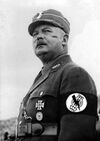 Siegfried Höcker |
1935 | 1942 | |||
| The OSU was created in 1935 after nationalist members of the OSAI were expelled for advocating a seizure of power following the great war. Centred around Siegfried Höcker the OSU began to support national syndicalism that called for a small vanguard to secure a proletarian revolution. The OSU steadily moved to the right engaging in paramilitary violence as they secured support from ex-servicemen. It was dissolved in 1942 by the Weranian government after Höcker attempted a putsch against the Weranian government. | |||||||

|
Sotirian Democratic Party Sotirian Demokratische Partei |
 Ludwig Stadtbäumer |
 Konstantin Vogel |
1950 | 1957 | ||
| Formed from the left-wing of the KSP after the defeat in the Valduvian-Weranian War, the SDP would soon become the largest party of the right but governed n a coalition with the OSAI and SPO from 1950 to 1955. The SDP played a major role in Werania entering the Euclean Community. A strong supporter of a social market economy the KSP under its leader Konstantin Vogel was the main party to push for the creation of the NKP in 1957. | |||||||
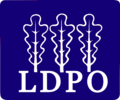
|
Liberal Democratic Party of Werania Liberal-Demokratische Partei Ostischland |
 Walther Ritter von Dittmann |
1951 | 1957 | |||
| The LDPO was formed as a merger of the KSP, Zentrum and NLP after the three parties lost the majority of their support due to the Valduvian-Weranian War. The LDPO was intended to be a big-tent conservative party but failed to become larger then the SDP. The two parties merged in 1957 to form the NKP. | |||||||

|
Catholic Labour Union Katholischer Arbeiterverband |
 Rainier Meißner |
 Ewald Geist |
1955 | 1986 | ||
| The KAB was formed from left-wing members of the SDP who opposed the coalition of the SDP and LDPO formed in 1955. A Sotirian left party they generally worked with the social democrats in the Bundestag although at times cooperated with the governing party on social issues. In 1977 they merged into the SRPO. | |||||||
| Socialist Alternative Party Sozialistische Alternativpartei |
 Max Kupferblum |
a Wolfgang Löscher |
1972 | 1986 | |||
| The Socialist Alternative Party (SAP) were formed by defectors from the Weranic Section of the Workers' International (OSAI) who supported the 1972 protests and believed in creating greater alliances with the centre-left. The party would be a founding member of the Social Democratic Radical Bloc and would merge into its unified successor the SRPO in 1986. | |||||||
| Social Democratic Radical Party of Werania Sozialdemokratische Radikale Partei von Ostischland |
 Frank Schellscheidt |
 Luise Höcherl |
1977 | 2021 | |||
| A merger of the Social Democratic Party of Werania and the Radical Party in 1977 the SRPO was intended to serve as a centre-left counterpart to the NKP in order to facilitate the creation of a two-party system. The SRPO first came to power in 1984 under Ludolf Ostermann who would become Werania's longest serving Chancellor in 100 years. Initially aligned with the socialist OSAI the party embraced third way politics during the 1980's overseeing economic liberalisation. The party lost power in 1999 entering government again in 2011 in a coalition with liberal parties. In 2019 the party suffered its worst result in its history and merged into Euclean Werania in 2021. | |||||||

|
Modern Centre Party Partei des Modernen Zentrums |
 Sotirian Böhm |
  Edmund Remarque & Anna Nehammer |
1990 | 2021 | ||
| The Modern Centre Party was founded in 1982 by former NKP members who espoused a common programme of radicalism, liberalism and political reform. The PMZ entered government in 1983 with the SRPO where they promoted economic and social liberalism, going into opposition in 1999. They reformed a coalition government with the SRPO in 2011 as the junior partner where they pushed through austerity policies to reduce public expenditure. The PMZ lost power alongside the SRPO in 2019 and merged into Euclean Werania in 2021. | |||||||
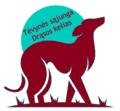
|
Homeland Union - Way of Courage Tėvynės sąjunga – Drąsos kelias Heimatbund – Der Weg des Mutes |
 Vytautas Vaidotas |
 Natalija Saldaitiene |
1986 | 2016 | ||
| A centrist Ruttish regionalist party, the TS-DK was intended to represent "soft nationalism" uniting both Ruttish nationalists and other voters who were unhappy with the incumbent OSAI-dominated governments. The TS-DK was broadly centrist although had a strongly liberal approach to economic affairs. The party would form a coalition with the NKP in Ruttland for much of the 1990s and following the 2003 election served on a federal level as well. After 2007 it faced strong competition from the more nationalist National Coalition for Independence and faced an electoral wipeout in 2011; the party lost the remainder of its seats in 2015 and subsequently dissolved. | |||||||

